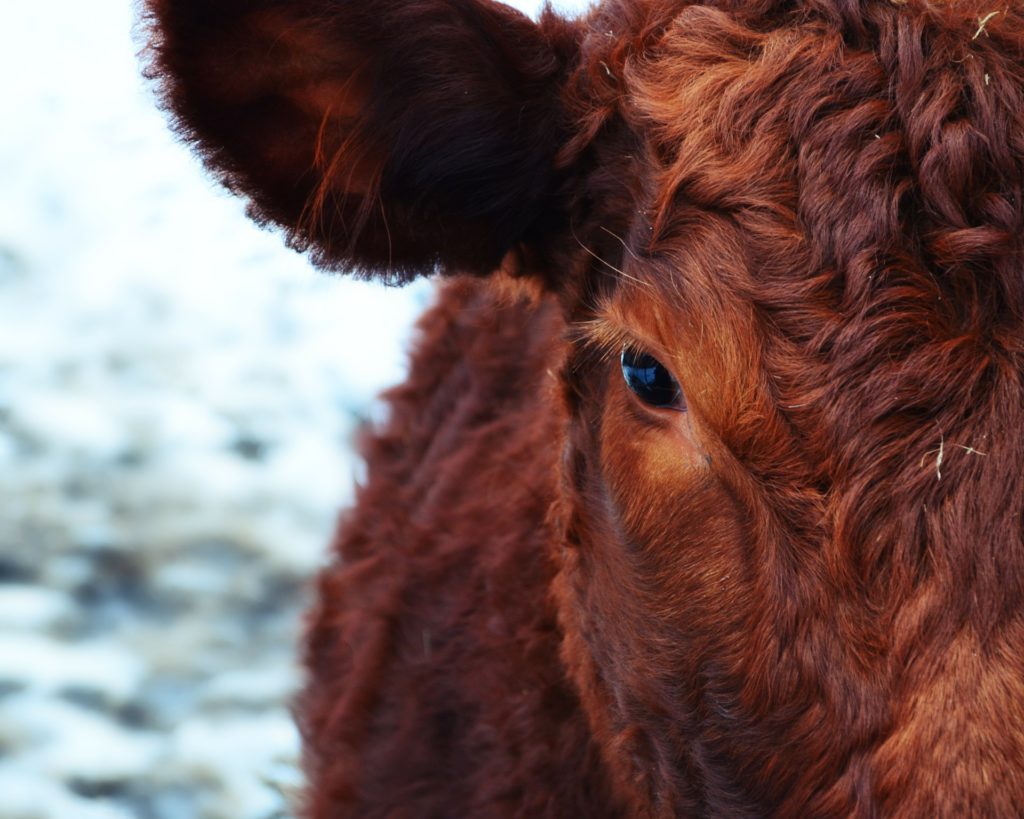After surviving a busy calving season, producers are often ready to put the feed wagon away for a few months and turn pairs out to pasture. Dry conditions in the Upper Midwest however, may have producers pulling feed wagons out of the shed earlier than normal this year due to decreased forage production across much of North Dakota and South Dakota. There simply isn’t enough grass to go around; therefore, something must be done to more efficiently utilize pasture to its fullest potential, while still meeting cow nutrient needs and keeping grassland health in mind too.
Pasture quality is variable across the country, and cows consume different amounts of forage based on mature size, stage of production (gestation vs. lactation) and forage palatability. If pasture is adequate to meet lactation and maintenance requirements, cows can more quickly overcome the anestrous period (non-cycling) and be bred within 80 days postpartum in order to maintain an adequate yearly calving interval. With that said, lactation greatly increases these requirements and if adequate nutrition is not provided, cows may not resume normal estrous cycles and fail to become bred early in the season.
Strategies to Consider
If you feel pastures are not going to provide adequate nutrients to prepare cows for breeding, here are some management strategies that can be done to potentially stimulate estrus, maintain good pregnancy rates, and save some feed resources too.
TEMPORARY CALF REMOVAL
Temporary calf removal is when calves are removed from cows for 48 – 72 hours prior to the start of breeding. Facilitated best with synchronization or fixed time AI protocols, removing calves suspends suckling temporarily and stimulates the resumption of cyclicity which is dependent on Luteinizing Hormone (LH). This “suckling effect” is the physical stimulation of suckling that causes the release of endorphins which block LH and other hormones release so cows don’t resume normal estrous cycles. In turn, by removing suckling for 48 – 72 hours, LH stores are replenished and secretions increase which will help bring cows out of anestrus. Temporary calf removal has the potential to improve breeding success in thin or nutrient-deficient cows during times when forage is scarce.
EARLY WEANING AT BREEDING
Another option is to early wean calves. Early weaning is defined as separating calves from their dams at less than 180 days of age, and as early as 2 months of age. This management technique can be incorporated at breeding time in order to conserve forage for the rest of the summer. This is due to removing the lactation requirements, and will cause cows to consume less grass because nutrient needs have decreased. Weaning during breeding season might be easier to facilitate if utilizing a synchronization protocol where calves have been already sorted off from cows. Timing during this process is important since weaning is a stressful event not only on calves but also on cows. Therefore, if and if practical, wean calves before the start of, or early in the breeding season. This way, cows will benefit from increased LH secretions to stimulate estrus during the first 21 days of the season. Lusby and others, found early weaning calves (ages 6 – 8 weeks) from first-calf heifers increased conception rates compared to normal weaning at 7 months of age (97% vs. 59%). Moreover, 90% of cows were cycling by day 85 postpartum vs. 34% of cows in the normal weaning treatment.
In Summary
If dry conditions are near your area, alternative management strategies should be considered in order to help keep cash flowing and not sacrifice profit due to missed opportunities. Techniques like temporary calf removal and early weaning are just two option to consider when cows may be stressed and feedstuffs are less available.
Source: Taylor Grussing, former SDSU Extension Cow-Calf Field Specialist.








